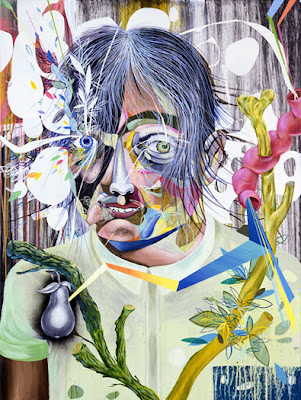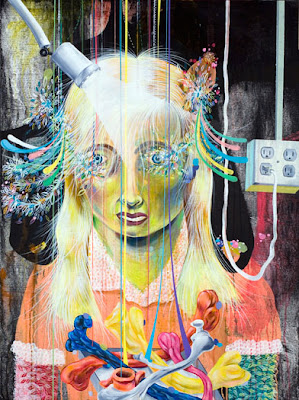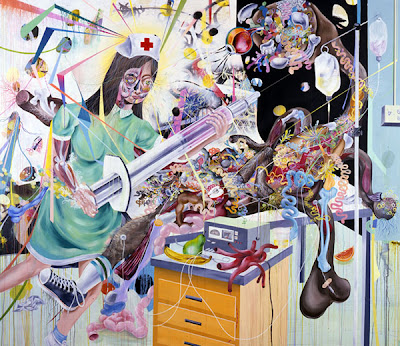It's one of those Sunday afternoons where time seems to crawl by at the perfect pace. There's no rush, no engagement, no anxiety. It's abnormally warm for a January afternoon, the sun is setting, the house is getting dark. What a perfect time to brake in the new blog...
My goal for this project is to collect, critique, and archive contemporary artwork as a means of developing a relationship with Art that transcends the isolated act of just viewing the work. As the project builds, I plan on organizing the posts from the role of a curator which will challenge me to think both formally and conceptually about the work I choose. But for now, I will start with a couple of pieces from artist I consistantly look to for inspiration. Check it..

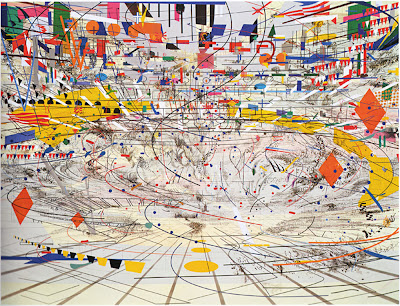

Julie Mehretu
Stadia I,II,III
On a trip to NY last spring I was fortunate to have the ability to experience a number of amazing artworks live and in person. While at New York Anthology Film Archive we were able to see a selection of films from the archive hand picked by Archive founder Jonas Mekas. I'm shooting myself in the foot for not being able to find the notes I took that day, because their was one film in particular that made me think of the paintings of Julie Mehretu. In the film, shots of the city and it's inhabitants were portrayed carrying out their everyday rituals. Hords of people walking in different directions, traffic starting and stopping, boats on the water skating across the picture frame. The speed of the film was what made it interesting, sped to the point that everyday situations become blurred. Colors overlapping and moving, drawing lines and color fields into the projected picture frame of the film. Time within the film was flattened, meaning, when you watch it at it's normal speed, time and space have a relationship that gives dimensionality to the film. When it's sped up, you lose that dimensionality. Cars, people, boats, trains, loses their definition to become fleetiing marks of color and line drawing themselves within the space the film has created. Now as I look at these Mehretu pieces, I see the same sort of lines, marks, and shapes within the paintings. From Mehretu's beautiful book "Black City", Agustin Perez Rubio writes, "The multitude of perspectives, scales and strat in the work of Julie Mehretu are not only charged with esoteric references to the history of art and architecture; they are also statements about human presence past present, and future." The works are layered both in process and in content. Expressive lines and marks, bold shapes, architectural blueprints are laid down layer after layer. Mehretu incapsulates these marks by creating a resin layer in between each level of the piece.
In Stadia I, II, III, Mehretu evokes the idea of the stadium. An arena or forum for observation and interaction. In these works, ideas of globalization, interconnectivity, and mass communication enable us as a species to exist in a world were we are both spectator and participant.


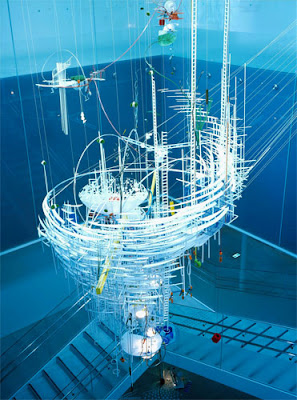

Sarah Sze
Things Fall Apart, 2001, SFMOMA
The Art of Losing, 2004, 21st Century Museum of Contemporary Art, Kanazawa Japan
Tilting Planet, 2006, Malmo Konstall, Malmo, Sweden
I must say I have only recently started looking at these extraordinary installation pieces by Sarah Sze, so I may update this post as I become more in tune to the shit that flies through my head when I look at them. The objects Sze uses in her installations are common, everyday items you would find in grocery stores, hardware stores, or variety shops. The objects are free from manipulation and remain easily recognizable as what they were manufactured as. However, to pass these off as just references to pop culture or pop art would be to grossly misinterpret the work. The way these objects are used and arranged is important because it allows the viewer to spend less time focusing on the commonplace context of the object and more time understanding it as a formal element within a larger system of objects, gestural shapes, lights, plants, and whatever else Sze might include.
In many pieces Sze places the work in corners, entry ways, closets, ceilings, or a combination of all four. By using spaces that normally exist in the periphery of gallery or museum spaces, Sze's work seem to incubate, hatch, and explode into an elaborate and complex system of possibilty.

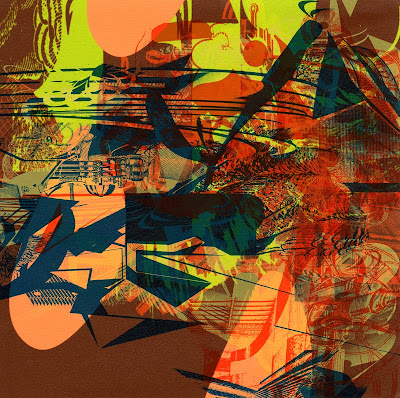
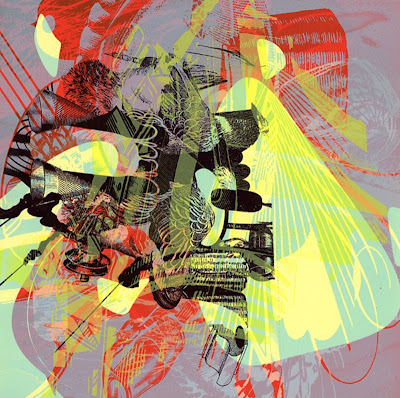
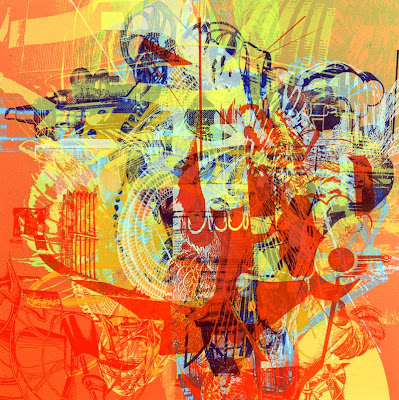
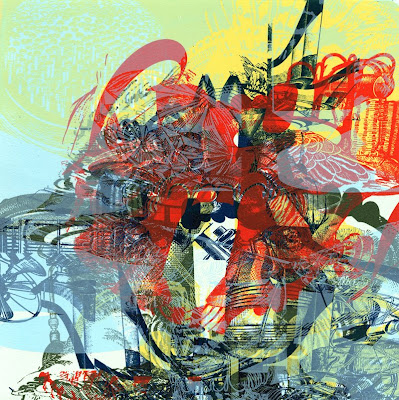



























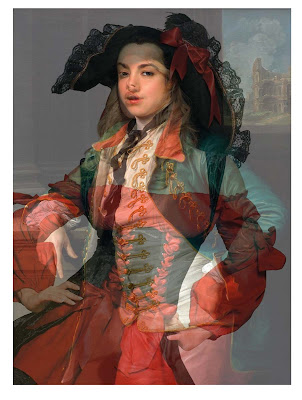


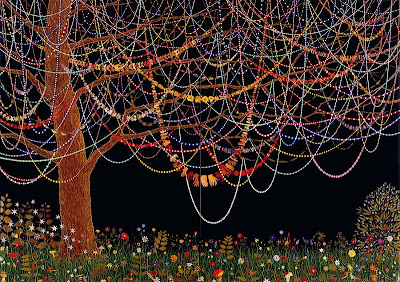






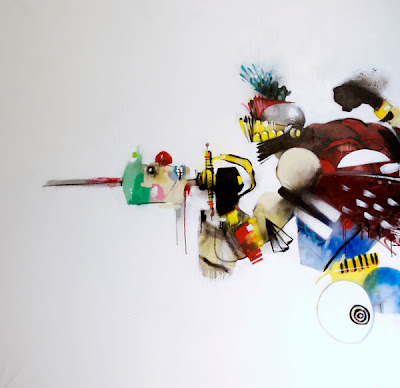-copy.jpg)
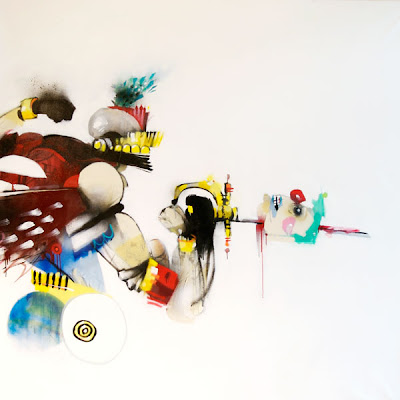-copy.jpg)

